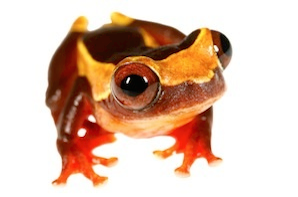The Finest Reptile Enclosures: Exactly How to Develop the Perfect Habitat
Developing the best habitat for reptiles is not just concerning positioning them in a container or enclosure; it involves a thoughtful consideration of various factors that contribute to their overall well-being. From the dimension of the unit to the sort of substratum utilized, every aspect plays a critical duty in giving a setting where your reptile can prosper. By comprehending the details demands of your reptile varieties and carrying out the ideal habitat setup, you can ensure their wellness and joy in captivity.
Choosing the Right Unit Dimension
When choosing an enclosure size for reptiles, it is essential to consider their natural actions and area requirements to guarantee their wellness and health and wellness. When it comes to environment area, different reptile varieties have varying requirements. Arboreal varieties like chameleons or tree snakes require upright space for perching and climbing up, while terrestrial types such as bearded dragons or leopard geckos need more flooring space for discovering and thermoregulation. Water turtles like red-eared sliders demand rooms with both water and land areas for swimming and basking.
A general policy of thumb is to give enough room for the reptile to exhibit natural behaviors, such as basking, hiding, climbing, and foraging. By very carefully taking into consideration the details needs of the reptile species in question, proprietors can develop an ideal and improving environment that advertises total wellness and motivates all-natural habits.
Establishing Appropriate Heating Elements
To guarantee the wellness and health of reptiles in their enclosures, it is important to meticulously establish up appropriate burner. Reptiles are ectothermic creatures, meaning they depend on external warmth resources to control their body temperature. When establishing burner in a reptile unit, it is vital to think about the details temperature level demands of the species you are caring for. Various reptiles have varying temperature requires based upon their natural environment, so it is vital to research study and comprehend these requirements.
One effective and usual heating component for reptile enclosures is a warmth lamp or ceramic warmth emitter. These heat resources can be used to produce a temperature gradient within the unit, enabling reptiles to relocate between warmer and cooler locations as required. Furthermore, under-tank hot pad or heat floor coverings can be used to supply belly warm, which is particularly advantageous for reptiles that call for extra warmth to assist in digestion.
Keeping track of the temperature level within the unit using a thermometer is necessary to make certain that the burner are preserving the proper temperature level array for your reptile. Routinely inspect and change the home heating aspects as needed to create a healthy and comfortable atmosphere for your flaky close friend.
Picking Appropriate Lights Components

Providing the Suitable Substrate
Choosing the suitable substrate is essential for creating a comfy and appropriate setting for reptiles in their units. Some reptiles, such as desert-dwelling types like bearded dragons, flourish on substrates like calcium sand or reptile carpeting, while others, like sphere pythons, choose coconut husk or aspen bedding to keep humidity degrees.
Additionally, the size of the reptile need to likewise influence your selection of substrate, as hatchlings may call for a finer product to protect against consumption. Avoid substratums that can trigger impaction, such as loosened substrates like sand or crushed rock, particularly for reptiles known to consume their bedding. Routinely cleansing and replacing the substratum is important to ensure a tidy and hygienic setting for your reptile. By selecting the ideal substrate, you can add to the total health and health of your scaly buddy.
Decorating for Enrichment and Convenience
Taking into consideration the substratum's function in providing a structure for all-natural habits and maintaining an ideal setting, improving the reptile enclosure with appropriate decors is essential for both enrichment and convenience. When decorating the enclosure, it is crucial to take into consideration the reptile's species-specific needs and actions to produce a space that advertises mental and physical health. By integrating a variety of decors that simulate the reptile's natural environment, owners can guarantee their family pet's comfort and boost their all-natural instincts, inevitably leading to a happier and healthier reptile.
Verdict

Producing the excellent environment for reptiles is not just about putting them in a container or unit; it entails a thoughtful factor to consider of numerous variables that contribute to their overall wellness.Choosing the proper substratum is essential for creating a appropriate and comfy look here atmosphere for reptiles in their rooms. Some reptiles, such as desert-dwelling varieties like bearded dragons, grow on substratums like calcium sand or reptile carpeting, while others, like round pythons, favor coconut husk or aspen bed linens to keep moisture degrees.
By including a selection of decors that resemble the reptile's all-natural environment, owners can ensure their animal's comfort and stimulate their natural instincts, inevitably leading to a better and much healthier reptile.
In final thought, producing the optimal habitat for reptiles involves selecting the suitable room dimension, check my reference heating components, lighting fixtures, substrate, and decorations.